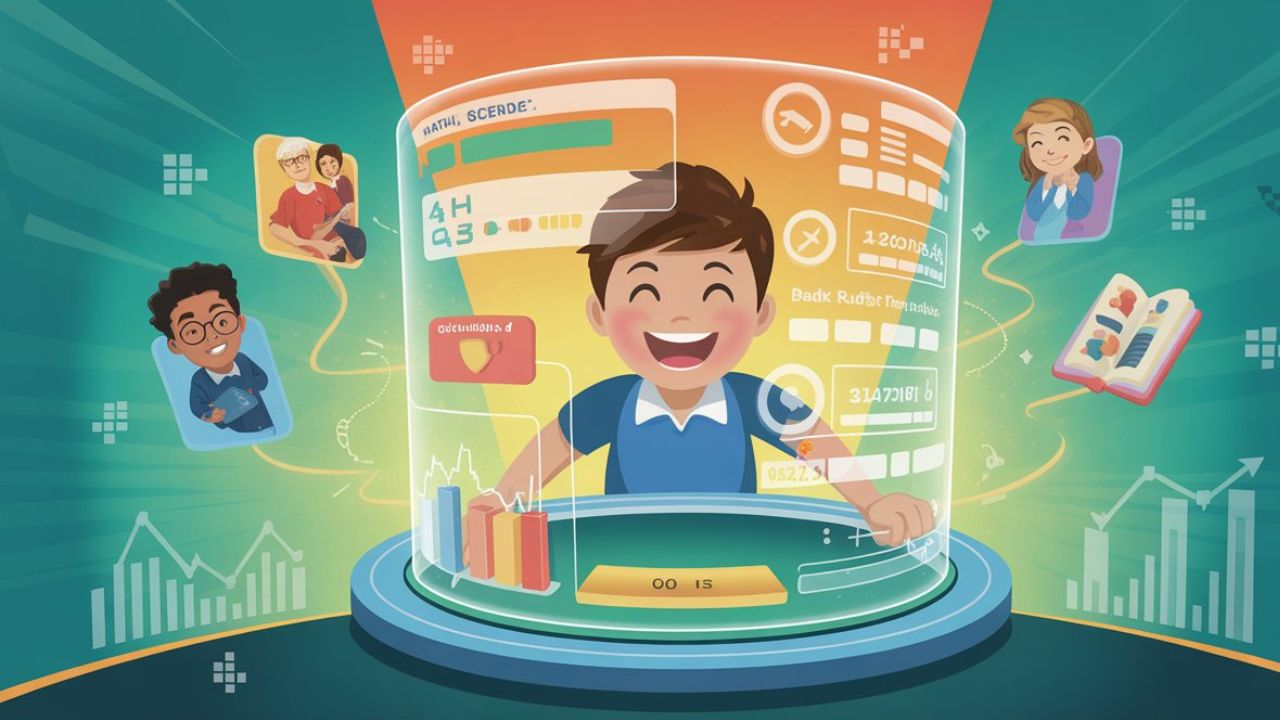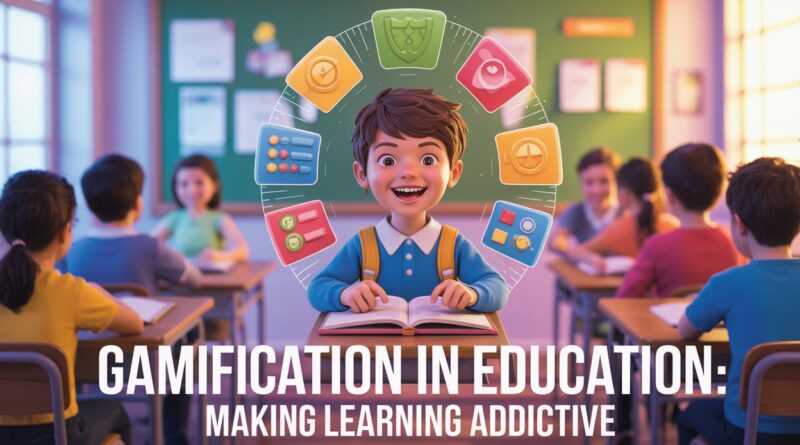Gamification in Education: Making Learning Addictive
What is Gamification in Education?
Gamification is all about bringing the magic of games into the classroom. It means using game-like elements—like points, levels, badges, and challenges—in educational settings to make learning more interactive, fun, and, yes, even addictive. Think of it as turning the classroom into a playground, but with purpose.
Why Gamification Matters Today
Let’s be honest: traditional education can feel boring and outdated. Gamification offers a fresh, engaging alternative that taps into what students already love—games. When done right, it doesn’t just entertain; it transforms learning into something students want to do, not just have to do.
🧠 The Psychology Behind Gamification
Dopamine and the Reward System
Ever feel a small thrill when you win a game or unlock a badge? That’s dopamine at work. Gamification leverages this natural “feel-good” chemical to reward learning milestones and motivate continued progress.
Intrinsic vs. Extrinsic Motivation
Games don’t just dangle rewards—they also make us feel proud, accomplished, and smart. While extrinsic motivation involves rewards like points, intrinsic motivation is fueled by curiosity and the joy of mastering something new. Great gamification balances both.
🎯 Key Elements of Gamification
Points and Leaderboards
These add friendly competition to the mix. Students love tracking their progress and seeing how they stack up.
Badges and Achievements
Badges are like trophies for learners. They recognize specific accomplishments and give learners tangible proof of success.
Levels and Progress Bars
Ever stayed up late just to hit the next level? That’s the power of visible progress. Levels help break big tasks into smaller, achievable goals.
Storytelling and Narrative
Adding a storyline to a lesson (like a hero’s quest) makes it more immersive. Students become characters in their own learning adventure.

🚀 Benefits of Gamifying Education
Boosting Student Engagement
Gamified content is naturally more interactive and enjoyable. Boredom? Say goodbye to that.
Improving Retention Rates
Studies show students remember more when they’re emotionally and mentally invested—exactly what gamification does.
Promoting Healthy Competition
Leaderboards encourage students to push their limits—but in a way that’s supportive, not cutthroat.
Personalizing the Learning Path
Gamification lets students move at their own pace, making learning more accessible and less stressful.
🛠️ Popular Gamification Tools and Platforms
Kahoot!
A quiz platform that turns assessments into fun, fast-paced games.
Duolingo
One of the most addictive language-learning apps out there—thanks to levels, streaks, and XP points.
Classcraft
An RPG-style learning environment where students become characters and earn powers for academic effort.
Quizizz
Offers real-time multiplayer quizzes with leaderboards and memes to keep learners laughing and learning.
🏫 Gamification Across Educational Levels
Primary Schools
Young kids thrive on rewards and visuals. Gamification here often involves colorful badges, stickers, and interactive storytelling.
Secondary Education
Older students benefit from deeper narratives and strategic challenges that relate to real-world problems.
Higher Education
Universities are using gamified simulations, case studies, and challenges to teach everything from medicine to marketing.
Online Learning & MOOCs
With dropout rates notoriously high in online learning, gamification boosts engagement and keeps learners coming back.
⚠️ Challenges and Limitations
Over-reliance on Rewards
If students only work for points, the deeper value of learning can get lost. It’s essential to balance rewards with reflection.
Not Suitable for Every Subject
Let’s face it—some subjects are harder to gamify than others. Creative thinking is key here.
Technological Barriers
Not all classrooms have access to the devices or internet needed for gamified learning.
Teacher Readiness & Training
It takes time and support for educators to learn how to gamify effectively.
🎓 How to Implement Gamification in the Classroom
Start Small: Use Quizzes and Badges
Even a simple leaderboard or quiz game can spark interest and enthusiasm.
Create a Game Plan (Literally)
Design a clear structure. What are the levels? What do students earn? What’s the story behind the lesson?
Monitor and Adjust
Track how students respond and tweak the game elements accordingly. Flexibility is key.
📚 Real-World Examples and Case Studies
Duolingo’s Language Learning Impact
With over 500 million users, Duolingo has gamified language learning in a way that’s effective, simple, and fun.
Quest to Learn
A public school in New York designed entirely around game-based learning. Students take on quests and missions instead of assignments.
🔮 The Future of Gamified Education
AI-Powered Adaptive Games
AI can now personalize learning content based on how a student performs in real time.
VR/AR for Immersive Learning
Imagine learning history by stepping into a VR battlefield or exploring DNA with an AR microscope.
Blockchain for Reward Systems
Future educational rewards might be recorded on a blockchain, giving students verifiable proof of skills.
📌 Tips for Educators and Instructional Designers
- Know Your Audience: Gamification looks different for a 6-year-old than for a college student.
- Align with Learning Goals: Fun is great, but learning should still be the focus.
- Keep It Fresh: Update challenges and levels to maintain engagement.
- Use Variety: Mix and match mechanics—points, narrative, collaboration—for the best results.
👨👩👧 Parental and Institutional Perspectives
Addressing Screen Time Concerns
Educators should communicate with parents about how gamification adds value and not just screen time.
Institutional Support
Schools must train teachers, provide the right tech, and create policies that support experimentation with gamification.
📊 Measuring Success in Gamified Education
Track What Matters
Engagement, completion rates, test scores—use data to see what’s working.
Build Feedback Loops
Ask students what they enjoy, what helps them learn, and where the game could improve.
✅ Conclusion
Gamification isn’t just a buzzword—it’s a revolution in how we think about education. It turns passive students into active learners, transforms boring lectures into exciting quests, and most importantly, makes learning addictive in the best way possible. The future of education isn’t just digital; it’s playful, immersive, and deeply human.
❓FAQs
1. What is gamification in simple terms?
Gamification means adding game elements like points, badges, and challenges to non-game situations—like school—to make them more fun and engaging.
2. Is gamification effective in all subjects?
Not always. While subjects like language learning and history gamify easily, more abstract subjects like philosophy may require creative adaptation.
3. What are some free tools to start gamifying a class?
Kahoot!, Quizizz, and Classcraft are great starting points—and they offer free versions!
4. Can gamification work in traditional classrooms?
Absolutely. Even without tech, you can gamify with leaderboards, challenges, and rewards.
5. How does gamification affect student behavior?
It increases motivation, encourages collaboration, and helps students see learning as a rewarding experience—not a chore.



